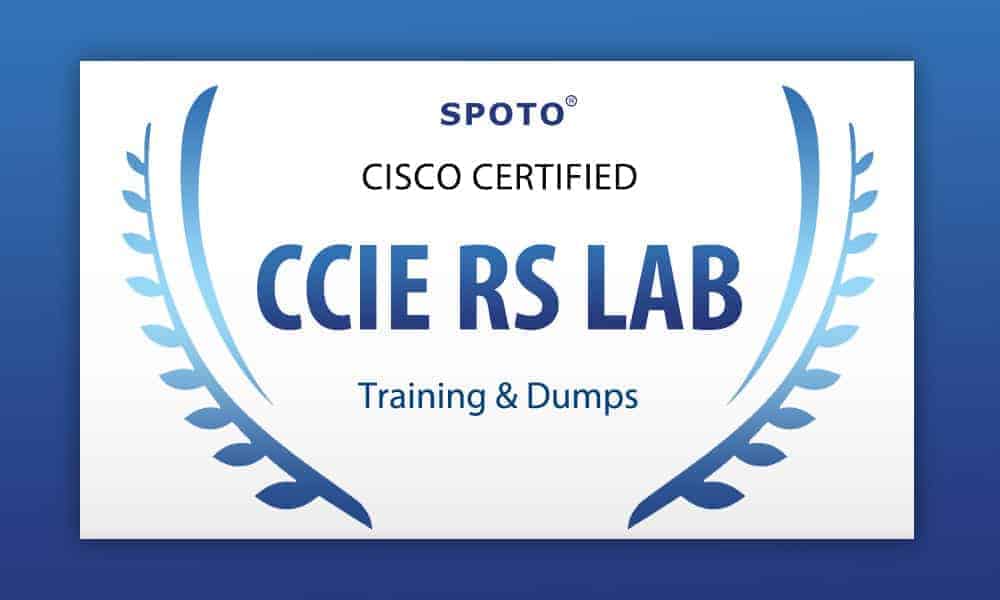100% Pass Cisco, PMP, ISACA, CompTIA, AWS Practice Dumps on SALE!
Sign Up Now for CCIE EI Lab/Sec Lab and Increase The Service Cycle By 2 Weeks Get Now
Sign Up Now for CCIE EI Lab/Sec Lab and Increase The Service Cycle By 2 Weeks Get Now
What is CCIE R&S Lab Exam Layer 2?
 Before we move on what would be there in the Layer 2 of CCIE Routing and Switching Lab Exam, let’s first have a brief overview of what is CCIE R&S.
Before we move on what would be there in the Layer 2 of CCIE Routing and Switching Lab Exam, let’s first have a brief overview of what is CCIE R&S.
 CCIE Routing and Switching:
CCIE Routing and Switching certification are designed specifically for the network managers, senior network engineers, professionals, as well as architects who would be considered as responsible for implementing and troubleshooting today’s multifaceted congregated networks in enterprise networking environments.
This expert-level certification recognizes that the course taker has acquired the knowledge and experience in network infrastructure technologies. CCIE Routing and Switching are going to validate the technical expertise which would be required for the candidates to implement and troubleshoot complex networks and would help them to improve network uptime, which would again increase user productivity as well as provides business agility. CCIE R&S Certification could quite be gruesome to obtain, but if you have the help of some good training providers like the SPOTO, you could ease up your study part, by their study dumps. Now, let’s discuss the CCIE R&S Lab Exam:
CCIE R&S Lab Exam
The CCIE R&S lab exam would be about eight-hour. This exam is considered to be hands-on exam which would be requiring the candidates to configure and troubleshoot a series of complex networks which would be given specifications. Knowledge of troubleshooting would play an important role here and candidates would be expected to diagnose and provide a solution to the issues as part of their CCIE R&S lab exam. You wouldn’t be just configuring end-user systems but would be also considered to be responsible for all devices that would be residing in the network.
Below mentioned are the details included in the Layer 2:
1.1 LAN switching technologies
CCIE Routing and Switching:
CCIE Routing and Switching certification are designed specifically for the network managers, senior network engineers, professionals, as well as architects who would be considered as responsible for implementing and troubleshooting today’s multifaceted congregated networks in enterprise networking environments.
This expert-level certification recognizes that the course taker has acquired the knowledge and experience in network infrastructure technologies. CCIE Routing and Switching are going to validate the technical expertise which would be required for the candidates to implement and troubleshoot complex networks and would help them to improve network uptime, which would again increase user productivity as well as provides business agility. CCIE R&S Certification could quite be gruesome to obtain, but if you have the help of some good training providers like the SPOTO, you could ease up your study part, by their study dumps. Now, let’s discuss the CCIE R&S Lab Exam:
CCIE R&S Lab Exam
The CCIE R&S lab exam would be about eight-hour. This exam is considered to be hands-on exam which would be requiring the candidates to configure and troubleshoot a series of complex networks which would be given specifications. Knowledge of troubleshooting would play an important role here and candidates would be expected to diagnose and provide a solution to the issues as part of their CCIE R&S lab exam. You wouldn’t be just configuring end-user systems but would be also considered to be responsible for all devices that would be residing in the network.
Below mentioned are the details included in the Layer 2:
1.1 LAN switching technologies
- 1.1.a Implement and troubleshoot switch administration
- 1.a [i] Managing MAC address table
- 1.a [ii] errdisable recovery
- 1.a [iii] L2 MTU
- 1.1.b Implement and troubleshoot layer 2 protocols
- 1.b [i] CDP, LLDP
- 1.b [ii] UDLD
- 1.1.c Implement and troubleshoot VLAN
- 1.c [i] access ports
- 1.c [ii] VLAN database
- 1.c [iii] normal, extended VLAN, voice VLAN
- 1.1.d Implement and troubleshoot trunking
- 1.d [i] VTPv1, VTPv2, VTPv3, VTP pruning
- 1.d [ii] dot1Q
- 1.d [iii] Native VLAN
- 1.d [iv] Manual pruning
- 1.1.e Implement and troubleshoot etherchannel
- 1.e [i] LACP, PAgP, manual
- 1.e [ii] layer 2, layer 3
- 1.e [iii] load-balancing
- 1.e [iv] etherchannel misconfiguration guard
- 1.1.f Implement and troubleshoot spanning-tree
- 1.f [i] PVST+/RPVST+/MST
- 1.f [ii] switching priority, port priority, path cost, STP timers
- 1.f [iii] port fast, BPDUguard, BPDUfilter
- 1.f [iv] loopguard, rootguard
- 1.1.g Implementing and troubleshooting other LAN switching technologies
- 1.g [i] SPAN, RSPAN, ERSPAN
- 1.2.a Implement and troubleshoot IGMP
- 2.a [I] IGMPv1, IGMPv2, IGMPv3
- 2.a [ii] IGMP snooping
- 2.a [iii] IGMP querier
- 2.a [iv] IGMP filter
- 2.a [v] IGMP proxy
- 1.3.a Implement and troubleshoot HDLC
- 1.3.b Implement and troubleshoot PPP
- 3.b [i] authentication [PAP, CHAP]
- 3.b [ii] PPPoE
- 3.b [iii] MLPPP
- 1.4.a Use IOS troubleshooting tools
- 4.a [i] debug, conditional debug
- 4.a [ii] ping, traceroute with extended options
- 4.a [iii] Embedded packet capture
- 1.4.b Apply troubleshooting methodologies
- 4.b [i] Diagnosing the root cause of networking issue [analyze symptoms, identify and describe root cause]
- 4.b [ii] Designing and implementing valid solutions as per the constraints
- 4.b [iii] Verify and monitor resolution
- 1.4.c Interpret packet capture
- 4.c [i] Using wireshark trace analyzer
- 4.c [ii] Using IOS embedded packet capture